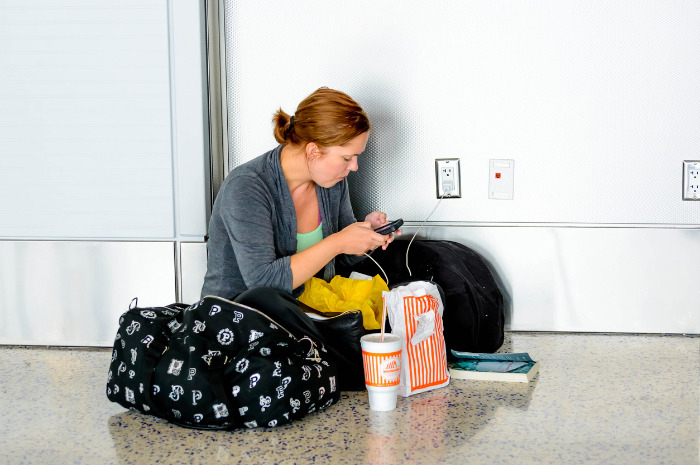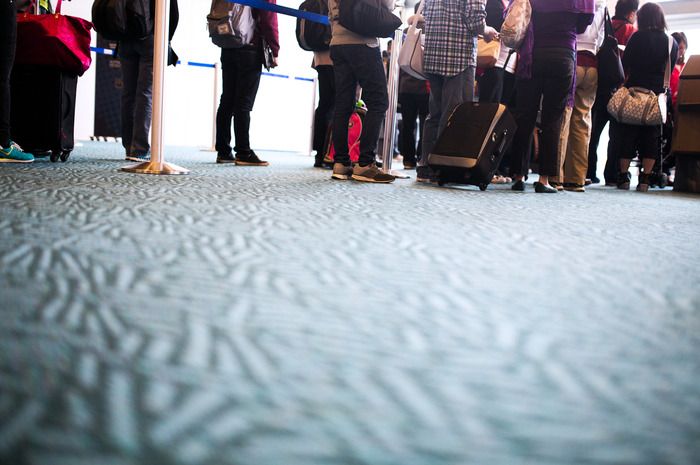Why You Should Never Walk Through Airport Security Barefoot
Why You Should Never Walk Through Airport Security Barefoot
Airports in general are hectic and crowded; thousands of passengers pass through them on a daily basis. But the dreaded airport security is not only a hassle for many, but can pose a variety of health hazards.
Jason Tetro, microbiologist and author of the bestseller "The Germ Files" explains that although "there have been no scientific examinations of the microbial contamination of airport floors, studies have looked at surfaces in the airport and have found an incredible number of different types of bacteria, viruses, and fungi."
The following list was based on studies and research from various sources, some of which include Oxford Academic and the National Library of Medicine.
Staphylococcus aureus
"This bacterium is known to cause skin infections and can readily grow in the warm environment of your socks and shoes," Jason Tetro, microbiologist and author of the bestseller "The Germ Files," says. "Picking this up may lead to rashes, boils, and cysts."
Human Papillomavirus
"This virus causes warts and can survive quite well on floors," Tetro says. "There have been suspected cases of warts being picked up in airport security so this can be a potential problem for those barefoot enthusiasts."
Fecal coliforms
"As the name implies, these are bacteria normally found in our intestines. But without proper handwashing, they can end up on surfaces including floors," Tetro says. "While this is not a problem for the skin, if you happen to touch your mouth after touching your feet, you may end up with some gastrointestinal troubles during your flight."
Pseudomonas aeruginosa
"This bacterium is commonly found in the environment and poses little threat to our skin," Tetro says. "But if you have any kind of break in the skin, it could cause an infection requiring medical attention."
Shewanella putrefaciens
"This bacterium is normally found in the environment but has been identified as the cause of wound and eye infections," Tetro says. "It still is rare but can be found in airports and may pose a risk to anyone with an open wound or [who] happens to touch their eyes after putting on their shoes."
Rhodococcus
"This bacterium is common in the environment and is not a threat to healthy individuals. But those with compromised immune systems may end up with fever and possible pneumonia," Tetro says. "After you've touched your feet, make sure to use hand sanitizer to be safe."
Flavobacterium
"This bacterium is common in the environment and normally doesn't cause infection," Tetro says. "But in those with compromised immune systems, it may lead to skin infections leading to bumps and lesions."
Micrococcus luteus
"This is a common bacterium in the environment and it is known for one thing – it stinks," Tetro says. "If you pick this up on your feet, you may not be in danger of an infection but you may experience an unwelcome pungent odor when you take your shoes off."
Fungi
"Fungi are everywhere and inevitably end up on floors. Only a few species cause infections but they can be found in carpets such as those found in airports," Tetro says. "While the risk is low (most happen in wet environments such as swimming pools and locker rooms), the chances are present because people are continuing to shed these species even when they are not infected."
Respiratory viruses
"Although one may not think about catching the cold or the flu from a floor, these viruses can be aerosolized by the movement of bare feet on a carpet or picked up by the hands while putting on shoes and transferring to the nose and mouth," Tetro says. "Making sure to keep that hand sanitizer safe can help prevent the latter."











